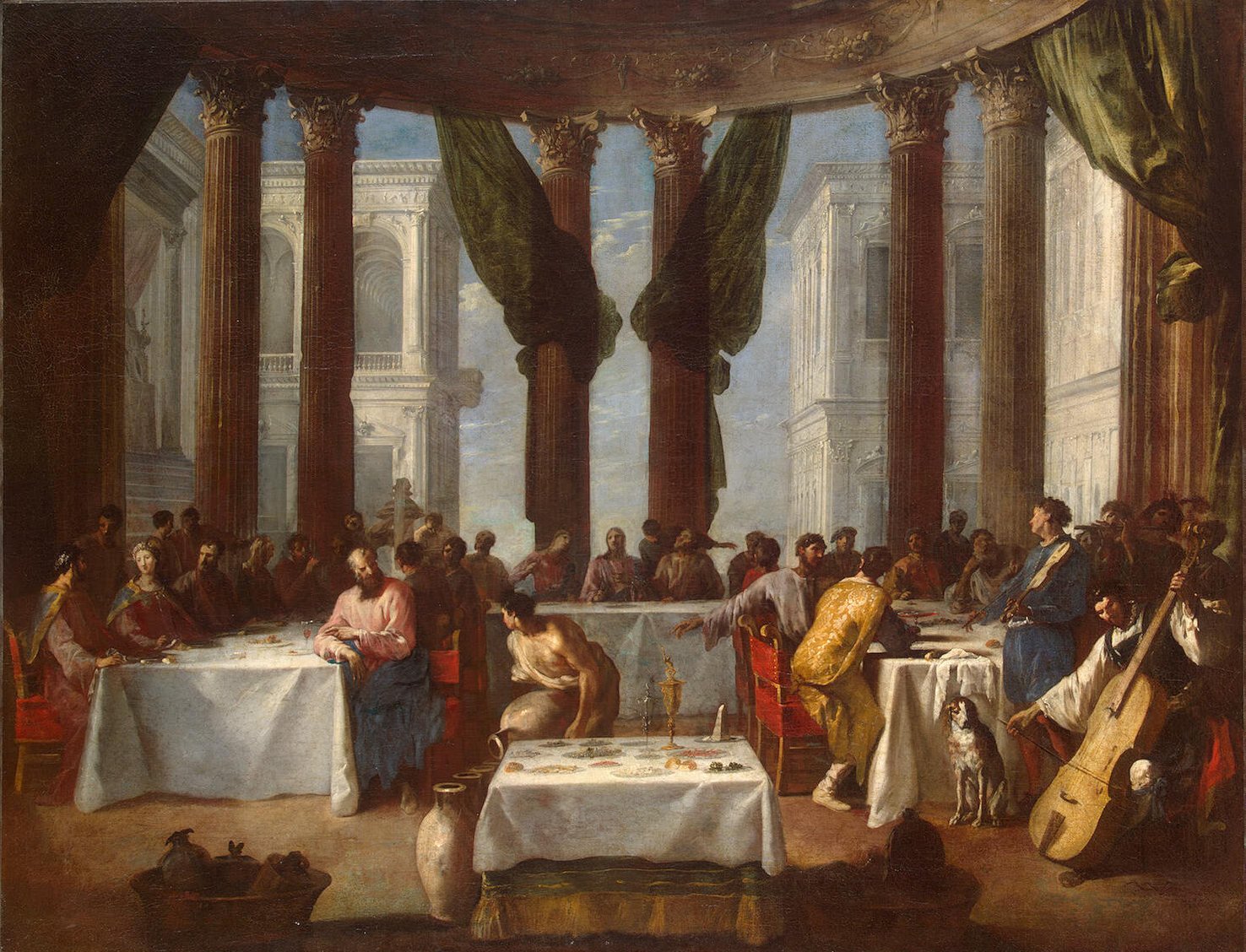Marriage at Cana by Johann Heinrich Schönfeld, John 2:1-12, Bible.Gallery
Artwork Description

Johann Heinrich Schonfeld's painting "Marriage at Cana" presents a complex and intriguing reinterpretation of a well-known biblical scene. At first glance, the composition's resemblance to Veronese's celebratory feast scenes is apparent, yet upon closer inspection, Schonfeld's distinct style emerges, challenging traditional expectations and invoking a ghostly atmosphere.
The artist's decision to depict the event within the context of grandiose, empty architecture immediately sets the tone for an otherworldly encounter. However, this choice also has the unintended effect of dwarfing the central figures and, in particular, Christ himself, within the vast expanse of colossal columns. The brushwork, characterized by its trembling quality, contributes to this diminutive portrayal of the characters. This stylistic approach, while intriguing, arguably compromises the visual impact of the narrative, potentially distancing the viewer from the emotional core of the story.
Schonfeld's inclination towards generalized forms and rejection of precise details can be seen as a deliberate artistic choice, possibly aimed at transcending the mere representation of tangible objects and figures. Nevertheless, this departure from realism can be polarizing, as some viewers may find themselves yearning for a more concrete connection with the depicted scene. This departure from realism might have been intended to evoke a sense of timelessness and universality, but it could also hinder the accessibility of the artwork.
The play of flickering light across the canvas, while undoubtedly an accomplished technical achievement, seems almost capricious in its movement, contributing to the painting's ethereal ambiance. However, this characteristic light manipulation also seems to imbue the scene with a certain emotional volatility, which may or may not resonate with the intended tone of the biblical narrative. The fusion of the subject's inherent emotions and the artist's personal sentiments, as suggested, adds an intriguing layer of complexity to the painting, blurring the line between the sacred story and Schonfeld's own melancholic inclinations.
Schonfeld's subjective and melancholic style, as noted, found popularity among his contemporaries and subsequent generations of artists. This reception underscores the enduring allure of his approach, which invites introspection and a deeper exploration of the human condition. However, it also raises questions about whether this painting's resonance lies primarily in its alignment with the prevailing artistic sensibilities of the time or in its successful portrayal of the chosen biblical event.
In conclusion, Johann Heinrich Schonfeld's "Marriage at Cana" is a thought-provoking artwork that navigates a delicate balance between innovation and tradition. While its ghostly vision and emotional undertones are undoubtedly captivating, its departure from conventional representations may create a sense of detachment for some viewers. As with any work of art, the interpretation of its merits and shortcomings remains subjective, inviting ongoing discourse and contemplation within the realm of art criticism.